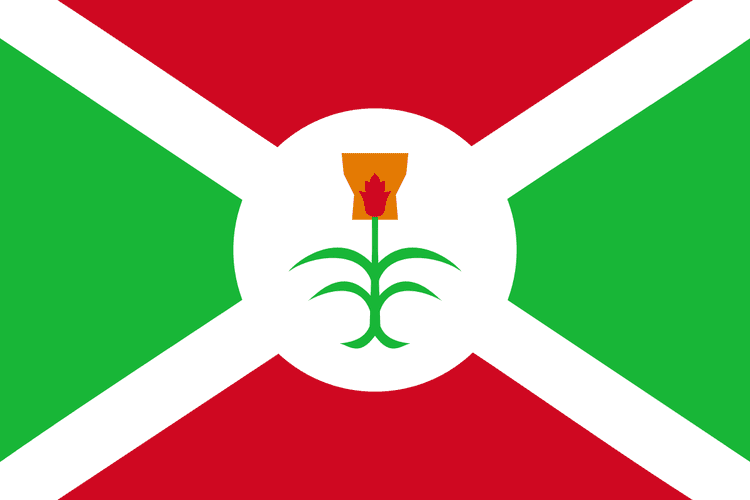1680–1709 Ntare I (first) 1961 Joseph Cimpaye (first) Established 17th century Area 27,834 km² Government Monarchy | 1966 Ntare V (last) Historical era Cold War Capitals Bujumbura, Gitega Founded 1680 Official languages Kirundi, French | |
 1966 Michel Micombero (last) Currencies Ruanda-Urundi franc, Burundian franc, German East African rupie Similar Kingdom of Kongo, Tooro Kingdom, Kingdom of Rwanda | ||
The Kingdom of Burundi (French: Royaume du Burundi) or Kingdom of Urundi (Royaume d'Urundi) was a polity ruled by a traditional monarch in modern-day Republic of Burundi in the Great Lakes region of East Africa. The kingdom, majority ethnic Hutu, was ruled by a monarch from the Tutsi ethnic group with the title of mwami. Created in the 17th century, the kingdom was preserved under European colonial rule in the late 19th and early 20th century and was an independent state between 1962 and 1966.
Contents
History
The date of the foundation of the Kingdom of Burundi is unknown but probably dates back to the 17th century when the Tutsi ethnic group gained dominance over the larger ethnic Hutu population of the region. Under mwami Ntare I (r.1675–1705), the kingdom expanded and annexed a number of surrounding polities. Although ruled by the mwami, the kingdom was extensively decentralised and local sub-rulers had wide independence. Before the arrival of European colonists, succession struggles were also common.
In 1890, Burundi became part of the German colonial empire as part of German East Africa but was not effectively occupied or controlled by the colonial power. During World War I, Belgian troops from the neighbouring Belgian Congo invaded the region and occupied it. The Belgians were awarded Burundi, together with the neighbouring Kingdom of Rwanda, as an international mandate by the League of Nations. The Belgians, however, preserved many of the kingdom's institutions intact.
Whereas the similar Rwandan monarchy was abolished in a revolution between 1959 and 1961, the Burundian monarchy succeeded in surviving into the post-colonial period. In 1962, the Kingdom of Burundi regained its independence as a constitutional monarchy in which the mwami held executive power and legislative power was given to the parliament. Ethnic violence between the Hutu majority and the Tutsi minority rose, however, between 1963 and 1965 and culminated with a failed coup d'état against the monarchy of Mwambutsa IV in 1965. Mwambutsa's son, Ntare V, deposed his father in a July 1966 coup d'état, but was himself ousted from power in a November 1966 coup d'état by his Prime Minister, Michel Micombero, who abolished the monarchy.
Legacy
Most members of the royal house live in exile in France today. In the 2005 elections, Princess Esther Kamatari ran for president for the Party for the Restoration of Monarchy and Dialogue in Burundi (Abahuza). Supporters believe that a restoration of a constitutional monarchy could help to ease the country's ethnic tensions.
The flag of the kingdom contained a karyenda in the center as a symbol of royal authority.
